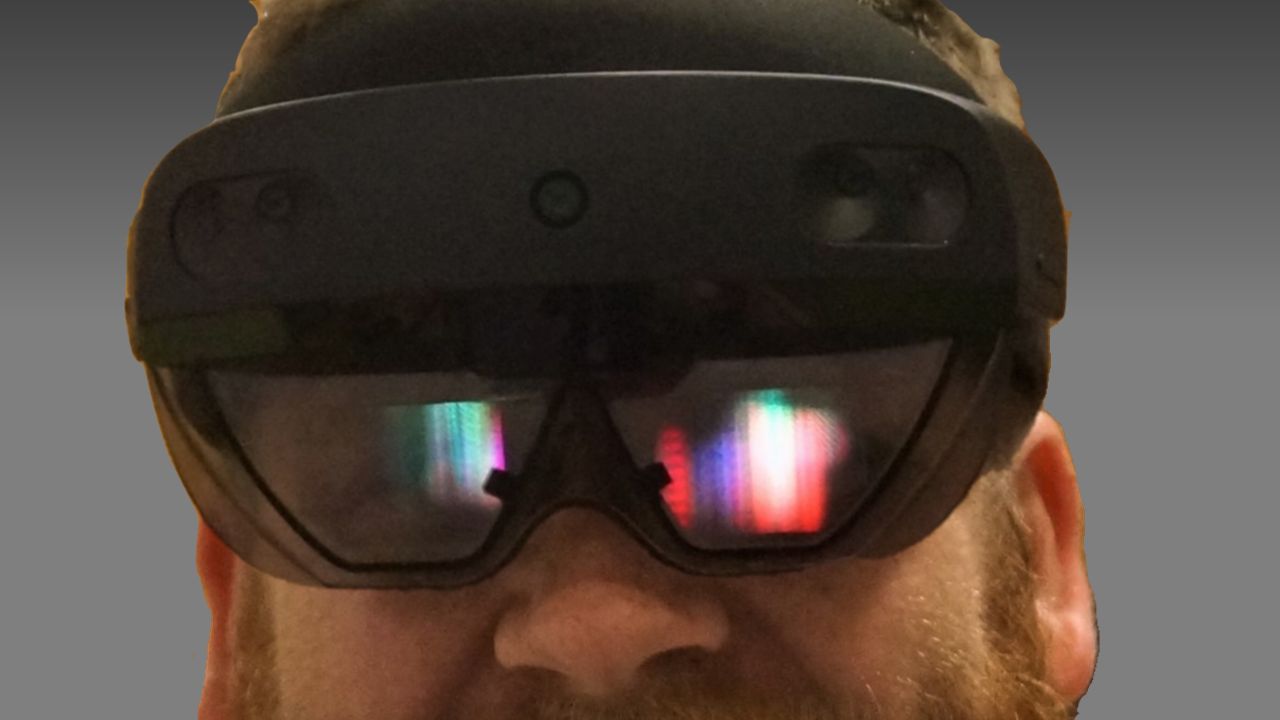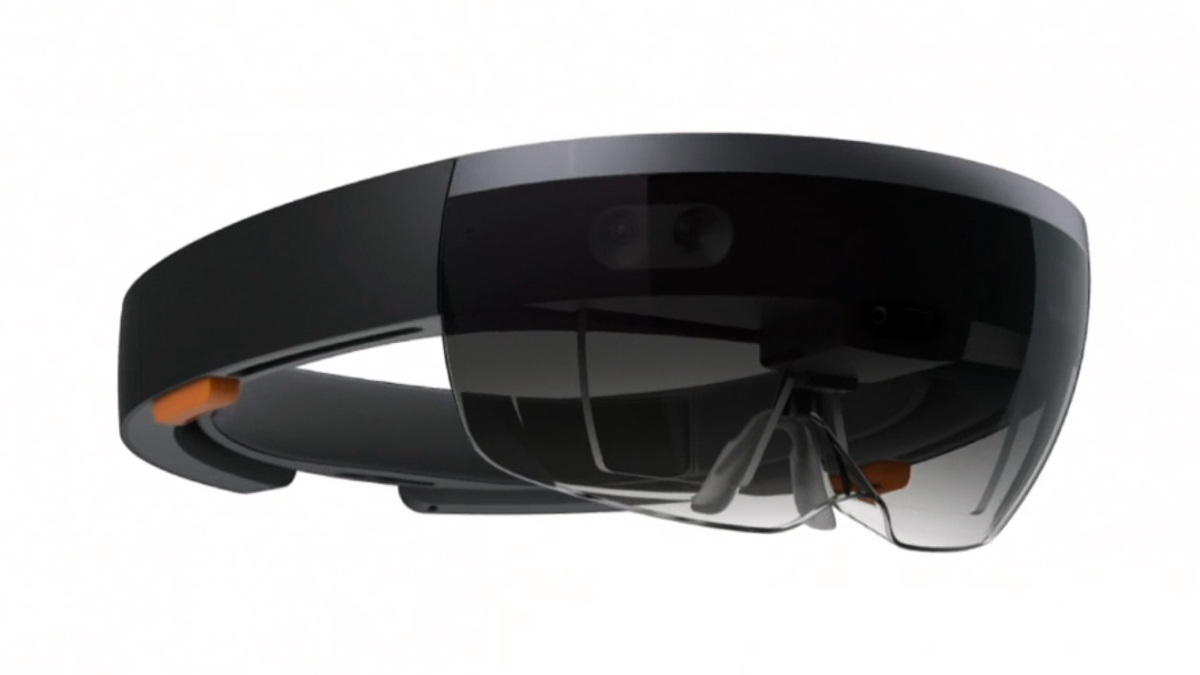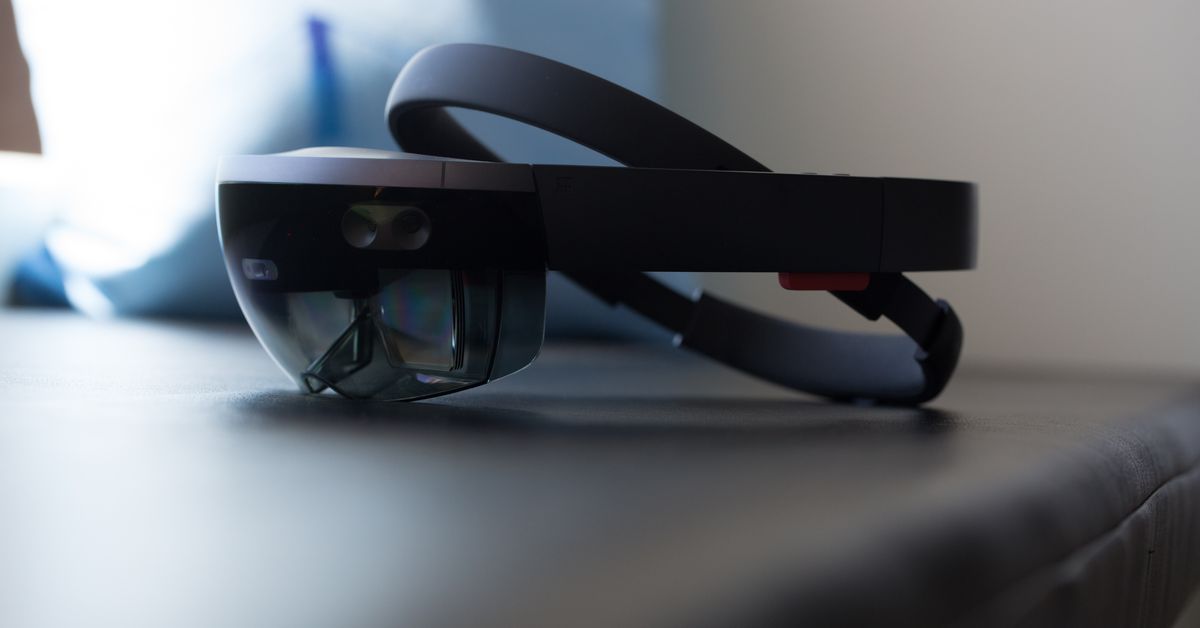Introduction
Welcome to our comprehensive guide on how to make an application run faster in HoloLens. As the demand for immersive augmented reality experiences continues to grow, it becomes crucial for developers to optimize their applications for optimal performance on HoloLens devices. In this article, we will explore various techniques and best practices that can help improve the speed and responsiveness of your HoloLens applications, ensuring a smooth and seamless user experience.
When it comes to creating applications for HoloLens, performance optimization is of paramount importance. Users expect fluid visuals, fast loading times, and minimal lag. By implementing the techniques discussed in this guide, you will be able to enhance the overall performance of your HoloLens applications and provide a more satisfying user experience.
Throughout this guide, we will cover a range of strategies to achieve improved performance. We will start by optimizing the graphics to ensure efficient rendering while maintaining visual quality. Next, we will explore ways to minimize startup time, ensuring that your application launches quickly and efficiently.
In addition to optimizing graphics and startup time, we will also look at methods to reduce CPU and memory usage. This will help ensure that your application runs smoothly without consuming excessive resources. We will also discuss how to streamline network requests, enabling faster data retrieval and minimizing latency.
Furthermore, we will delve into the benefits of using asynchronous programming techniques, which can enhance the responsiveness and performance of your application. Additionally, we will explore the implementation of caching mechanisms to improve data retrieval and reduce dependency on network requests.
We will also address the optimization of file I/O operations, as efficient file handling is essential for a speedy application. Lastly, we will discuss the importance of debugging and profiling to identify performance bottlenecks and implement optimized solutions.
By the end of this guide, you will have a solid understanding of the key strategies and techniques required to make your HoloLens application run faster. So, let’s dive in and unlock the full potential of your HoloLens development skills!
Optimize the Graphics
One of the key factors in improving the performance of your HoloLens application is optimizing the graphics. HoloLens devices have limited processing power and memory capacity, making it essential to ensure that your visuals are efficiently rendered without compromising quality.
Here are some strategies to optimize the graphics in your HoloLens application:
- Reduce polygon count: Complex 3D models with high polygon counts can significantly impact performance. To improve rendering speed, simplify your models by reducing the number of polygons while maintaining the necessary level of detail.
- Optimize textures: Large texture files can consume valuable memory. Minimize texture sizes and compress them to reduce their footprint without sacrificing image quality.
- Avoid overdraw: Overdraw occurs when multiple objects in the scene overlap, resulting in redundant rendering. Optimize your scene layout to minimize overdraw and ensure efficient rendering.
- Implement level-of-detail (LOD) techniques: LOD allows you to render lower-detail versions of your models when they are farther away from the user, reducing the computational load. This technique can greatly improve performance, especially in scenes with complex objects.
- Use occlusion culling: Occlusion culling enables you to hide objects that are not visible to the user, optimizing rendering performance. Implement techniques such as frustum culling and backface culling to skip rendering objects that are outside the user’s view.
- Utilize shader optimization: Optimize your shaders to minimize computation, eliminate unnecessary calculations, and reduce the number of shader passes. This can significantly improve frame rates and overall performance.
- Consider dynamic batching: Dynamic batching allows combining multiple objects with the same material into a single draw call, reducing the number of draw calls and improving performance.
By implementing these techniques, you can achieve significant improvements in the graphics performance of your HoloLens application. Remember to strike the right balance between visual quality and performance optimization to create an engaging and responsive augmented reality experience.
Minimize Startup Time
When developing a HoloLens application, minimizing startup time is crucial to provide a seamless user experience. Users expect applications to launch quickly and be ready for interaction without significant delays. Here are some strategies to optimize your HoloLens application’s startup time:
- Optimize asset loading: Identify and prioritize assets that are essential for the initial experience. Load these assets first and defer the loading of secondary assets that are not immediately needed. This will reduce the perceived startup time and allow users to interact with the application sooner.
- Asynchronous loading: Implement asynchronous loading techniques to load assets and resources in the background while displaying a loading screen or providing users with partial functionality. This approach allows users to start interacting with the application before all assets are fully loaded.
- Lazy initialization: Only initialize and instantiate objects when they are actually needed. Avoid unnecessary processing and memory allocation during startup. Lazily initialize objects as they become necessary to improve startup time.
- Optimize script initialization: Analyze and optimize the initialization code of your scripts. This includes reducing the number of unnecessary calls, optimizing loops and conditionals, and minimizing expensive computations during startup.
- Caching and preloading: Cache frequently accessed data or resources during installation or update processes. Preload these cached resources at startup, reducing the need for loading them at runtime. This can significantly improve startup time, especially for applications with large data sets.
- Parallelize initialization tasks: Identify initialization tasks that can be performed simultaneously and parallelize their execution. This can be achieved by using parallel processing techniques or leveraging multi-threading capabilities to distribute the workload and reduce overall startup time.
- Optimize UI construction: Ensure that the construction and layout of your UI elements are optimized for performance. Avoid nested or complex UI structures that can lead to lengthy initialization times. Simplify and streamline the UI construction process to minimize startup delays.
By implementing these strategies, you can significantly reduce the startup time of your HoloLens application. Remember to test the application on actual devices and measure the startup time to ensure you are achieving the desired performance improvements.
Reduce CPU and Memory Usage
To enhance the performance of your HoloLens application, it is essential to reduce both CPU and memory usage. By optimizing resource utilization, you can ensure smooth and responsive experiences for your users. Here are some strategies to achieve this:
- Optimize code execution: Analyze your code and identify areas where improvements can be made. Look for unnecessary loops, redundant calculations, or inefficient algorithms that can be optimized to reduce CPU usage. Consider using more efficient data structures and algorithms to minimize computational complexity.
- Reduce function calls: Excessive function calls can have a significant impact on CPU performance. Minimize the number of function calls by consolidating repetitive or unnecessary code segments, avoiding excessive use of callbacks, and optimizing event handling.
- Implement object pooling: Object pooling allows for the reuse of objects instead of constantly creating and destroying them, reducing memory allocation and deallocation overhead. This approach can be particularly beneficial for frequently used or resource-intensive objects.
- Manage resources efficiently: Properly manage and release resources that are no longer needed. This includes closing open connections, releasing memory, and disposing of unused objects. Neglecting resource management can lead to memory leaks, causing performance degradation over time.
- Apply dynamic resource allocation: Dynamically allocate system resources based on demand to minimize memory usage. For example, load and unload assets as they are needed, rather than loading everything at startup. This approach can reduce memory consumption and optimize the overall performance of your application.
- Optimize texture and audio memory: Graphics and audio assets can consume substantial memory. Compress textures to reduce their memory footprint without compromising quality. Similarly, consider using compressed audio formats to minimize audio memory usage.
- Limit the use of global variables: Excessive or unnecessary global variables can consume memory and impact performance. Minimize the use of global variables and instead rely on local variables or encapsulated data structures.
- Monitor memory usage: Continuously monitor the memory usage of your application using profiling tools. Detect and address memory leaks or excessive memory consumption to ensure optimal performance.
By implementing these strategies, you can effectively reduce CPU and memory usage in your HoloLens application. Remember to regularly profile and test your application to monitor its resource utilization and identify areas for further optimization.
Streamline Network Requests
Efficient network communication is essential for a responsive and performant HoloLens application. Streamlining network requests can significantly enhance the user experience by reducing latency and optimizing data retrieval. Here are some strategies to achieve this:
- Minimize network round trips: Reduce the number of network requests by combining multiple requests into a single batch or utilizing bulk operations. This helps minimize the overhead of establishing and maintaining network connections.
- Optimize data payloads: Minimize the size of data payloads sent over the network. This can be achieved through compression techniques or by using more efficient data serialization methods such as JSON or Protocol Buffers. Smaller payloads result in faster data transfer and improved network performance.
- Caching data: Implement client-side caching mechanisms to store frequently accessed data locally. This reduces the need for repetitive network requests, improving response times and reducing the load on the server.
- Manage timeouts and retries: Set appropriate timeout values for network requests to prevent excessive waiting times. Implement error handling and retry mechanisms to handle transient network failures gracefully and ensure successful data retrieval.
- Prioritize critical requests: Identify and prioritize critical network requests that are essential for the core features of your application. Ensure that these requests receive higher priority and are processed with minimal delay, while non-critical requests can be handled in a more asynchronous or background manner.
- Use WebSocket or persistent connections: When feasible, utilize WebSocket or persistent connections instead of opening and closing connections for each request. This helps reduce the overhead of establishing new connections, resulting in faster and more efficient communication.
- Optimize server-side communication: Assess and optimize server-side code to reduce unnecessary processing and improve response times. Analyze database queries, server-side frameworks, and any other components involved in responding to network requests.
- Monitor and analyze network performance: Utilize network monitoring tools and performance analysis to identify bottlenecks, latency issues, or any other network-related problems. This data will help you pinpoint areas for improvement and optimize network communication.
By streamlining network requests in your HoloLens application, you can reduce latency, improve data retrieval, and enhance overall performance. Remember to consider the specific requirements and limitations of the HoloLens device when implementing these strategies.
Use Asynchronous Programming
Asynchronous programming is a powerful technique to optimize the performance and responsiveness of your HoloLens application. By leveraging asynchronous operations, you can ensure smooth execution and reduce blocking that may lead to delays. Here are some key benefits and strategies to use asynchronous programming effectively:
- Improve responsiveness: Asynchronous programming allows your application to handle multiple tasks concurrently, ensuring that the user interface remains responsive even while performing time-consuming operations such as network requests or data processing.
- Utilize async/await: Take advantage of the async/await keywords in languages like C# to write asynchronous code in a more readable and straightforward manner. This pattern allows for easy chaining of asynchronous operations and improves code maintainability.
- Avoid blocking operations: Identify and eliminate or refactor blocking operations that can cause delays in your application’s execution. For example, use asynchronous versions of file I/O operations to prevent the UI from freezing while reading or writing data.
- Optimize thread usage: Asynchronous programming enables efficient utilization of threads by allowing them to execute other tasks while waiting for async operations to complete. This helps avoid thread starvation and ensures smooth concurrency.
- Progress reporting: Implement progress reporting mechanisms to update the user interface or provide feedback on the progress of long-running tasks. This keeps the user informed and engaged while waiting for asynchronous operations to complete.
- Handle exceptions: Properly handle exceptions in asynchronous code to prevent crashes or unexpected behavior. Utilize try-catch blocks or async-specific exception handling mechanisms to handle exceptions gracefully and provide users with meaningful error messages.
- Throttle async operations: Control the rate at which async operations are launched to prevent overwhelming resources or APIs. Implement throttling mechanisms to limit the number of parallel async requests or limit the frequency of certain operations to ensure efficient resource utilization.
- Concurrency patterns: Explore various concurrency patterns such as parallel processing, worker pools, or task-based parallelism to boost performance in scenarios that involve intensive computation or data processing.
By embracing asynchronous programming techniques in your HoloLens application, you can significantly improve responsiveness, ensure a smooth user experience, and make the most efficient use of system resources.
Implement Caching Mechanisms
Caching is a valuable technique to optimize the performance of your HoloLens application. By storing and reusing frequently accessed data, you can reduce the need for repetitive expensive operations, such as network requests or complex calculations. Here are some strategies to implement caching mechanisms effectively:
- Identify cacheable data: Determine which data in your application can be cached. This could include static content, frequently retrieved data from a database or API, or precomputed results of complex calculations.
- Choose an appropriate cache solution: Select a caching mechanism that matches the requirements of your application. Options include in-memory caches, distributed caches, or disk-based caches. Consider factors such as data size, access patterns, and persistence requirements.
- Implement data expiration policies: Define expiration rules for cached data to ensure it remains up-to-date. Set expiration intervals or use a cache eviction strategy based on data staleness or memory constraints.
- Use cache validation techniques: Implement mechanisms to validate cached data and determine if it is still valid. This could involve checking for updates from the data source or using timestamp-based validation to ensure the cached data remains accurate.
- Consider cache invalidation: Determine how to handle changes to data that is cached. Implement cache invalidation mechanisms to update or remove cached items when the underlying data changes to maintain consistency.
- Implement a cache management strategy: Develop a strategy to manage the cache, including clearing stale data, optimizing memory usage, and managing cache size. Implement techniques such as LRU (Least Recently Used) or LFU (Least Frequently Used) to prioritize cache entries.
- Implement multi-level caching: Use multiple layers of caching to optimize performance further. This may involve incorporating an in-memory cache for frequently accessed data and a disk-based cache for less frequently accessed data.
- Measure cache performance: Monitor and measure the effectiveness of your caching mechanisms. Analyze cache hit rates, miss rates, and cache latency to identify areas for improvement and optimize cache usage.
- Consider cache security: Evaluate the security implications of caching sensitive data. Implement appropriate security measures such as encryption or access control to protect cached data from unauthorized access.
By implementing effective caching mechanisms in your HoloLens application, you can significantly improve performance and reduce the load on external resources. Carefully analyze data access patterns and tailor your caching strategy accordingly to achieve optimal results.
Optimize File I/O Operations
Efficient file I/O operations are crucial for improving the performance of your HoloLens application. Slow or inefficient file operations can lead to delays or even cause the application to freeze. Here are some strategies to optimize file I/O operations in your HoloLens application:
- Use asynchronous file operations: Utilize asynchronous I/O methods for reading and writing files to avoid blocking the main thread and ensure smooth application execution. Asynchronous operations allow the application to continue processing other tasks while waiting for file operations to complete.
- Batch file operations: Minimize the number of file operations by batching them together whenever possible. Consolidating multiple read or write operations into a single request can significantly improve performance, reducing overhead and improving overall efficiency.
- Optimize file access patterns: Analyze your file access patterns and read/write operations to identify areas for improvement. Reduce unnecessary or redundant file accesses, and optimize the order or sequence of file operations to minimize disk seeking.
- Use memory-mapped files: Memory-mapped files allow accessing files directly from memory, avoiding the need for repeated disk access. This technique can provide a significant improvement in file I/O performance, especially for large files.
- Buffered I/O operations: Utilize buffered I/O operations to reduce the number of disk reads and writes. Buffering data in memory before writing to a file or reading from a file can improve performance by reducing the frequency of physical disk access.
- Implement file compression: Compress files before storage or during file transfer to reduce their size and minimize disk I/O. Compressed files can be decompressed on-demand, resulting in faster file access and reduced storage requirements.
- Avoid unnecessary file operations: Minimize the number of unnecessary file operations by caching frequently accessed files, validating the need for file access before every operation, or utilizing in-memory storage for temporary data.
- Properly handle file locks: Ensure that files are properly locked and released when necessary. File locks can cause contention and hinder concurrent file accesses, leading to performance degradation. Use file locking mechanisms judiciously to avoid unnecessary locking.
- Monitor file I/O performance: Continuously monitor file I/O performance during runtime to identify bottlenecks and areas for improvement. Utilize profiling tools to measure file access times and identify any performance issues that may arise.
By implementing these strategies, you can optimize file I/O operations in your HoloLens application, resulting in improved performance, reduced latency, and a smoother user experience.
Debug and Profile Performance
Debugging and profiling are critical steps in optimizing the performance of your HoloLens application. Through careful analysis and identification of performance bottlenecks, you can make informed optimizations to enhance the overall user experience. Here are key strategies to debug and profile the performance of your HoloLens application:
- Use debugging tools: Leverage the debugging capabilities provided by your development environment. Set breakpoints, step through code, and inspect variables to identify potential issues that impact performance.
- Monitor performance metrics: Utilize performance monitoring tools to track key metrics such as CPU usage, memory consumption, and network activity. Monitor these metrics during different scenarios to identify areas of inefficiency or potential performance bottlenecks.
- Measure execution times: Use timers or built-in profiling tools to measure the execution times of critical code sections. Identify areas that are taking longer than expected and focus on optimizing those sections to improve overall performance.
- Profile memory usage: Analyze the memory footprint of your application to identify potential memory leaks, excessive allocations, or inefficient memory usage patterns. Profile memory usage during different scenarios and optimize memory management accordingly.
- Analyze network requests: Monitor network request/response times and analyze the data transfer between your application and external resources. Identify slow or inefficient network requests and optimize them to reduce latency and improve overall performance.
- Use performance profilers: Employ performance profilers specific to your development environment or platform. These profilers can provide detailed insights into CPU usage, memory allocations, and performance hotspots, helping you pinpoint areas that require optimization.
- Simulate real-world usage: Test your application under realistic usage scenarios to identify performance issues that may only manifest under certain conditions. Consider factors such as varying network conditions, device resources, or large data sets to ensure optimal performance in different environments.
- Collect user feedback: Engage with users and gather feedback on performance issues they encounter. This valuable input can help you identify and prioritize areas for improvement, aligning your optimization efforts with the needs and expectations of your users.
- Iterate and revalidate: Continuously iterate, retest, and revalidate performance optimizations. As you make changes, monitor performance metrics to ensure that your optimizations are actually improving performance and not introducing new issues.
By effectively debugging and profiling the performance of your HoloLens application, you can identify and address performance bottlenecks, resulting in increased efficiency, improved responsiveness, and an enhanced user experience.
Conclusion
Optimizing the performance of your HoloLens application is crucial to provide users with a smooth and immersive augmented reality experience. By following the strategies and implementing the best practices discussed in this guide, you can significantly enhance the speed, responsiveness, and overall efficiency of your application.
Optimizing graphics by reducing polygon counts, optimizing textures, and utilizing LOD techniques can improve rendering performance while maintaining visual quality. Minimizing startup time by optimizing asset loading, using asynchronous programming, and implementing lazy initialization ensures that your application launches quickly and efficiently.
Reducing CPU and memory usage through code optimization, object pooling, and efficient resource management allows for smoother execution and improved resource utilization. Streamlining network requests by minimizing round trips, optimizing data payloads, and implementing caching mechanisms reduces latency and optimizes data retrieval.
The use of asynchronous programming enhances responsiveness, allowing your application to handle multiple tasks concurrently and ensure a smooth user experience. Implementing caching mechanisms for frequently accessed data reduces the need for repetitive operations, improving performance and reducing load on external resources.
Optimizing file I/O operations and implementing strategies such as asynchronous operations, buffering, and batch processing minimizes delays and improves file access efficiency. Finally, debugging and profiling performance using tools and techniques provided by your development environment helps identify bottlenecks, monitor metrics, and iteratively optimize your application.
Remember, continual testing, monitoring, and user feedback are essential in the ongoing process of optimizing your HoloLens application. By applying these strategies and actively seeking opportunities to enhance performance, you can ensure a satisfying and immersive experience for your users in the world of augmented reality.

























